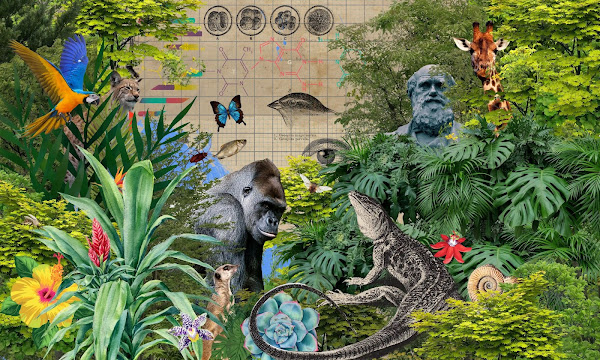In 1973, David Attenborough presented a BBC documentary that included an interview with one of the leading modern synthesists, Theodosius Dobzhansky. He was visibly distraught at the “non-Darwinian evolution” that some scientists were now proposing. If this were so, evolution would have hardly any meaning, and would not be going anywhere in particular
, he said. This is not simply a quibble among specialists. To a man looking for the meaning of his existence, evolution by natural selection makes sense.
Where once Christians had complained that Darwin’s theory made life meaningless, now Darwinists levelled the same complaint at scientists who contradicted Darwin.
Other assaults on evolutionary orthodoxy followed. The influential palaeontologists Stephen Jay Gould and Niles Eldredge argued that the fossil record showed evolution often happened in short, concentrated bursts; it didn’t have to be slow and gradual. Other biologists simply found that the modern synthesis had little relevance to their work. As the study of life increased in complexity, a theory based on which genes were selected in various environments started to seem beside the point. It didn’t help answer questions such as how life emerged from the seas, or how complex organs, such as the placenta, developed. Using the lens of the modern synthesis to explain the latter, says the Yale developmental biologist Günter Wagner, would be like using thermodynamics to explain how the brain works
.
Stephen BuranyiI somewhat agree with the premise of the article – that we don’t have the complete picture about how life on Earth evolved – to which I would add that seeking clear-cut answers about events that happened millions to billions of years in the past is an utterly futile endeavor. We may not be able to fully trace how the SARS-CoV-2 virus jumped to humans, which happened in our lifetimes, let alone discover the intricacies that led to the emergence of eyes in the animal kingdom.

In detail, the article thus reads like a purely academic discussion: various experts trying to gain credence for their narrow field of study at the expense of others. Some of the arguments mentioned against evolutionarily theory don’t stand up even to minor scrutiny. In my understanding, it’s a fairly widespread consensus that evolution indeed has no ‘meaning’ or overall direction, instead it’s a gradual accumulation of mutations that are randomly put to the test by environmental changes. Detrimental mutations are quickly eliminated from the gene pool, as they often lead to impairment, infertility, or death of the affected organism. Neutral and beneficial mutations, though rarer, are preserved, even if they don’t confer some measurable, immediate benefit. Even harmful mutations can be inherited, as long as their effect is small enough that it doesn’t prevent the organism from reproducing – such as the genes that increase chance risk in humans: cancer usually develops at an older age, after people already passed on those harmful genes to their offspring. And when the environment undergoes sudden changes, these random collections of genes are put to their maximum stress test – hence why evolution often happened in short, concentrated bursts
.
Emily Standen is a scientist at the University of Ottawa, who studies Polypterus senegalus, AKA the Senegal bichir, a fish that not only has gills but also primitive lungs. Regular polypterus can breathe air at the surface, but they are much more content
living underwater, she says. But when Standen took Polypterus that had spent their first few weeks of life in water, and subsequently raised them on land, their bodies began to change immediately. The bones in their fins elongated and became sharper, able to pull them along dry land with the help of wider joint sockets and larger muscles. Their necks softened. Their primordial lungs expanded and their other organs shifted to accommodate them. Their entire appearance transformed. They resembled the transition species you see in the fossil record, partway between sea and land
, Standen told me. According to the traditional theory of evolution, this kind of change takes millions of years. But, says Armin Moczek, an extended synthesis proponent, the Senegal bichir is adapting to land in a single generation
. He sounded almost proud of the fish.
This example is particularly unsuited in this context. This fish is adapting to land in a single generation
because it already has the genetic blueprints for both land and underwater survival. This is not evolution, but simple gene expression, which depends to some extent on the immediate environment. It’s a more extreme version of arctic mammals changing their fur colors between summer and winter, or of people getting tanned after long exposures to the sun: biochemical changes that rely on existing genes, not create new ones on the fly.
Post a Comment